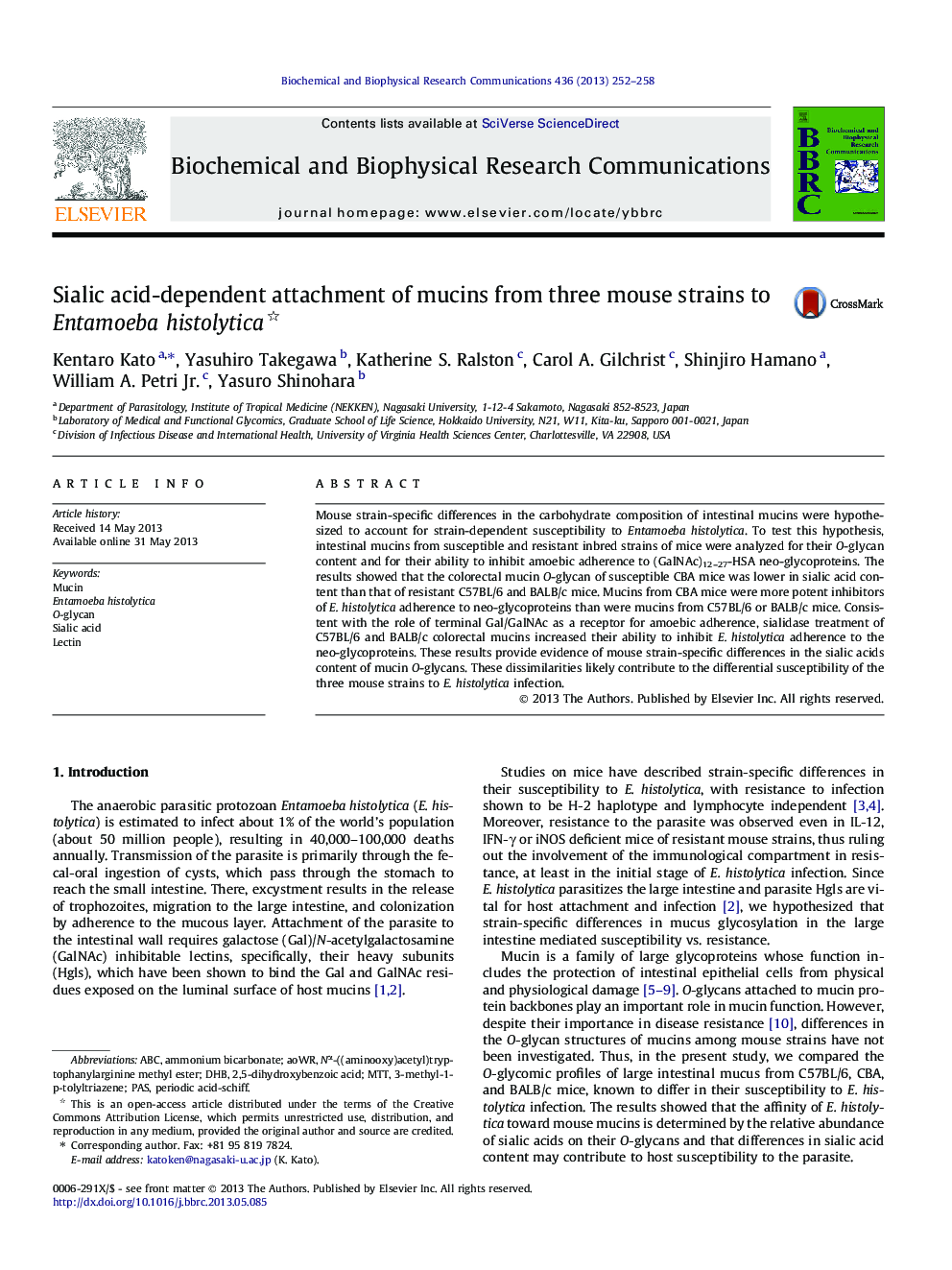| Article ID | Journal | Published Year | Pages | File Type |
|---|---|---|---|---|
| 10759240 | Biochemical and Biophysical Research Communications | 2013 | 7 Pages |
Abstract
Mouse strain-specific differences in the carbohydrate composition of intestinal mucins were hypothesized to account for strain-dependent susceptibility to Entamoeba histolytica. To test this hypothesis, intestinal mucins from susceptible and resistant inbred strains of mice were analyzed for their O-glycan content and for their ability to inhibit amoebic adherence to (GalNAc)12-27-HSA neo-glycoproteins. The results showed that the colorectal mucin O-glycan of susceptible CBA mice was lower in sialic acid content than that of resistant C57BL/6 and BALB/c mice. Mucins from CBA mice were more potent inhibitors of E. histolytica adherence to neo-glycoproteins than were mucins from C57BL/6 or BALB/c mice. Consistent with the role of terminal Gal/GalNAc as a receptor for amoebic adherence, sialidase treatment of C57BL/6 and BALB/c colorectal mucins increased their ability to inhibit E. histolytica adherence to the neo-glycoproteins. These results provide evidence of mouse strain-specific differences in the sialic acids content of mucin O-glycans. These dissimilarities likely contribute to the differential susceptibility of the three mouse strains to E. histolytica infection.
Keywords
Related Topics
Life Sciences
Biochemistry, Genetics and Molecular Biology
Biochemistry
Authors
Kentaro Kato, Yasuhiro Takegawa, Katherine S. Ralston, Carol A. Gilchrist, Shinjiro Hamano, William A. Jr., Yasuro Shinohara,
